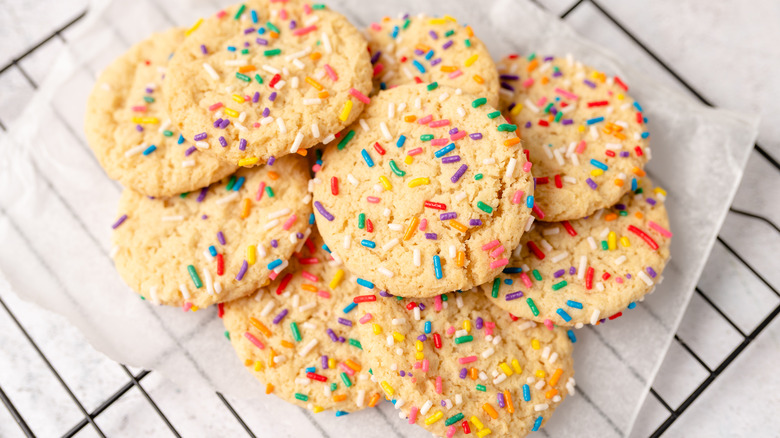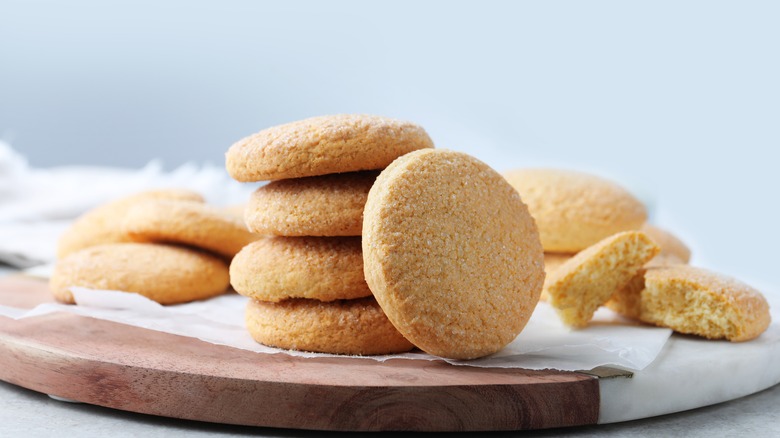Leaveners Are Common Baking Ingredients, But Your Sugar Cookies Don't Need Them
If you're an avid baker, then you know that many recipes include a leavener — most commonly, baking powder or baking soda — which is the substance that rises the dough. In other words, it's the difference between a loaf of bread that comes out short and dense versus a loaf of bread that comes out fluffy and full of volume. Leaveners are essential for many types of baked goods, such as cakes, pastries, and cookies.
However, there is one type of cookie that doesn't require a leavener: Sugar cookies. It's particularly essential to leave out the leavener if you plan to decorate the sugar cookies because the cookies will remain flat (without a leavening agent, the cookie won't rise). However, you will want to avoid too-flat cookies — to avoid this potential problem, you can chill the dough after mixing, then make sure to roll it out evenly. Additionally, be careful not to overdo it while rolling the dough, making it too flat — since the cookies won't rise in the oven, whatever thickness they're at after you roll them is about how thick they'll remain.
How leaveners affect sugar cookies
Now that you know how sugar cookies turn out without a leavening agent, you may be curious about what would happen if you decided to include one. Well, as we said before, the leavener is the ingredient that causes the dough to rise, so the end result will be a cookie with greater volume.
If you like sugar cookies that are fluffy and fuller, like these almond sugar cookies, then you will definitely need a leavener. Speaking about the texture of the cookies, recipe developer Jessica Morone told Tasting Table, "I love these cookies because they are so soft and pillowy." The "soft and pillowy" texture is all thanks to the baking soda, which allows for the cookie to rise and become soft.
To make sure that the sugar cookie becomes as fluffy as you're envisioning, it's important to use fresh baking soda; if your baking soda has been sitting in your pantry for too long (approximately six months or more), then it won't work to the best of its ability — and your cookies may end up more similar to if you had left out the leavener altogether.

